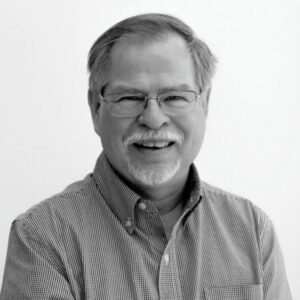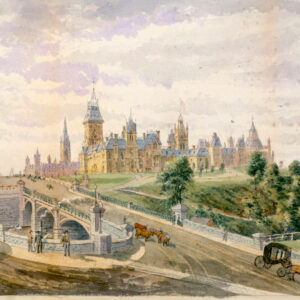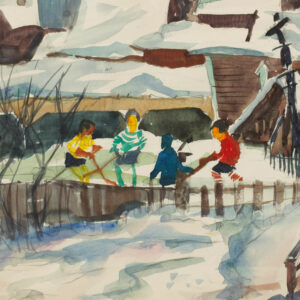-
Hamilton, Mary Riter (Canadian, 1873–1954)
After studying painting in Berlin and Paris in the early years of the twentieth century, Mary Riter Hamilton established herself as an artist in Europe before returning to Canada. During the First World War, she petitioned to be sent to the front lines as an official war artist but was denied. Instead, she travelled to Europe in 1918 to spend three years painting the war’s aftermath. She produced over three hundred works in an Impressionist style, depicting battlefields in France and Belgium.
-
Harris, Lawren S. (Canadian, 1885–1970)
A founding member of the Group of Seven in Toronto in 1920, Harris was widely considered its unofficial leader. Unlike other members of the group, Harris moved away from painting representational landscapes, first to abstracted landscapes and then to pure abstraction. The Group of Seven broke up in 1933, and when the Canadian Group of Painters was formed in 1933, Harris was elected its first president.
-
Hill, Greg (Kayen’kahaka [Mohawk]/French, Six Nations of the Grand River Territory, b. 1967)
An artist and a curator specializing in Aboriginal art. A Mohawk member of the Six Nations of the Grand River, Hill has led the Department of Indigenous Art at the National Gallery of Canada in Ottawa since 2007. (He was previously the gallery’s Assistant Curator of Contemporary Art.) His installation pieces are held in major national collections around the country.
-
Hodgkins, Frances (New Zealander/British, 1869–1947)
A watercolourist and art teacher who from 1901 studied and painted in Britain, North Africa, and Europe, spending more than ten years in Paris. Hodgkins settled in England, where she was associated with the Seven and Five Society, a group of modernist painters and sculptors whose work, like hers, moved from traditional styles toward abstraction.
-
Houle, Robert (Saulteaux, Kaa-wii-kwe-tawang-kak, b. 1947)
Painter, curator, teacher, and writer, known for increasing the visibility of contemporary First Nations art in Canada. Houle’s experience at Sandy Bay Residential School informs his colour field paintings, which gave him a conceptual language to express the opposing ideologies of Saulteaux-Ojibwa spirituality and Christianity. Houle served as the first Curator of Contemporary Indian Art at the Canadian Museum of History (1977–1980) and co-curated several landmark exhibitions of First Nations artists. He received the Governor General’s Award in Visual and Media Arts in 2015. (See Robert Houle: Life & Work by Shirley Madill.)
-
Hyndman, Robert (Canadian, 1915–2009)
A prominent Ottawa portrait and landscape artist, Hyndman was an official Canadian war artist during the Second World War. Serving first as a Spitfire pilot in the Royal Canadian Air Force’s (RCAF) 411 Squadron, Hyndman later depicted some of his more harrowing flying experiences and completed a series of portraits of wartime RCAF personnel. He taught at the Ottawa School of Art for over thirty years and held teaching posts at Alberta’s currently named Banff Centre for Arts and Creativity.
-
 About the Author
About the Author
Jim Burant is an Adjunct Professor of Art History at Carleton University, as well as Director of the Ontario Region of the National Archival Appraisal Board of Canada.
-
 More Online Art Books
More Online Art Books
Read online or download the ACI’s incredible library of art books for free in French and English.
Learn More -
 Read from Beginning
Read from Beginning
From a rough and tumble lumber town, Ottawa has become a vibrant metropolitan centre with a centre of artistic excellence.
Learn More
